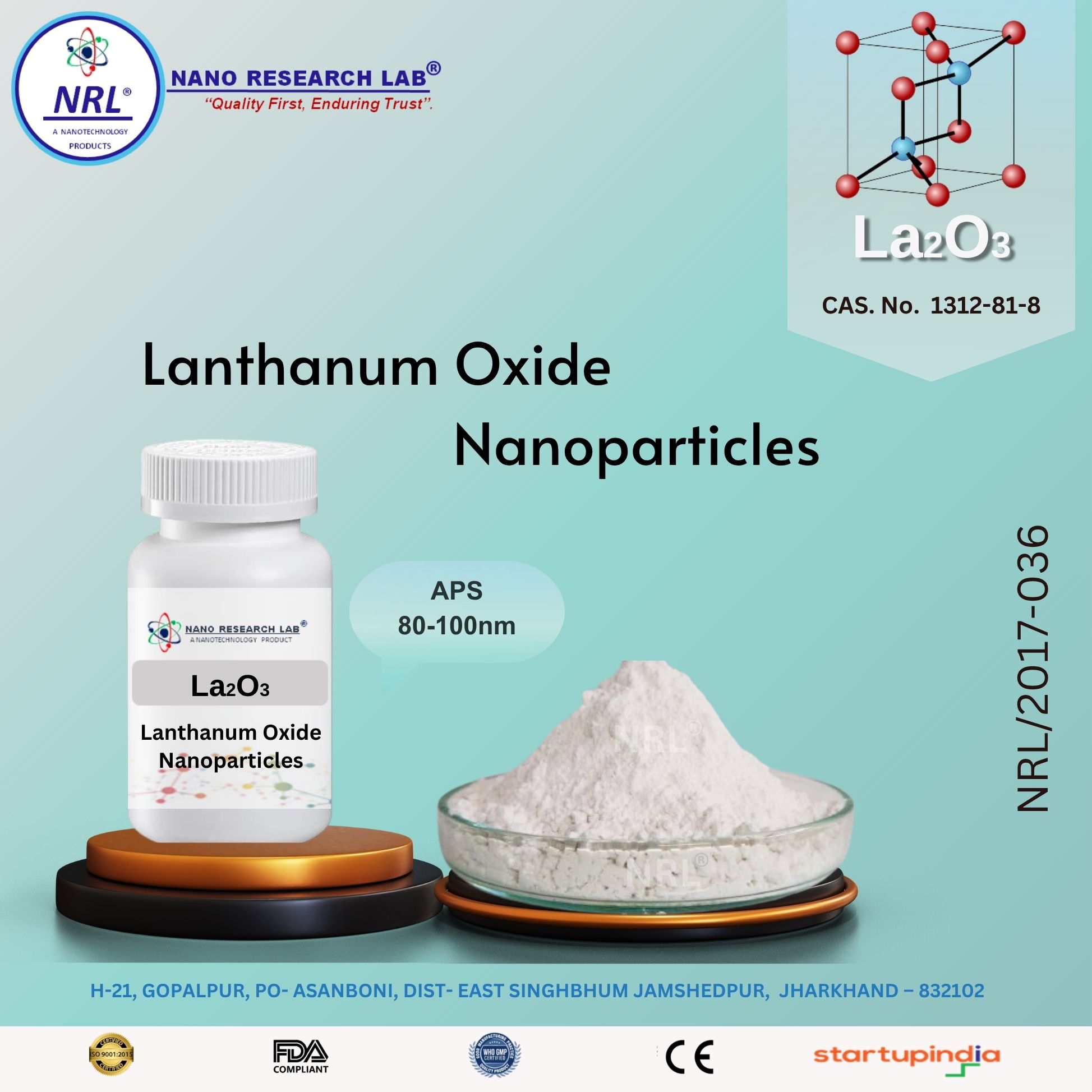
Lanthanum Oxide Nanoparticles/Nanoparticles (La2O3, 80-100nm, Purity 99.5%)
₹1475.00
Lanthanum Oxide Nanoparticles / Nanopowder (La₂O₃, 80–100 nm, Purity 99.5%)
Technical Specifications
Property | Specification |
|---|---|
Chemical Name | Lanthanum Oxide (La₂O₃) |
CAS Number | 12037-29-5 |
Molecular Weight | 325.81 g/mol |
Purity | ≥ 99.5% |
Appearance / Color | White Fine Powder |
Particle Size (Average) | 80–100 nm |
Morphology | Nearly Spherical / Irregular |
Crystal Structure | Hexagonal / Cubic (depending on synthesis) |
Density | ~6.51 g/cm³ |
Specific Surface Area (BET) | 15–40 m²/g |
Melting Point | 2307 °C |
Boiling Point | 3464 °C |
Solubility | Insoluble in water; soluble in acids |
pH (in aqueous suspension) | ~10–11 (basic nature) |
Stability | Chemically stable under normal conditions; hygroscopic in air |
Key Features
High Purity (≥ 99.5%) ensures minimal contamination for advanced applications.
Controlled Nanoparticle Size (80–100 nm): Provides moderate surface area and stability.
High Thermal Stability: Suitable for high-temperature applications.
Basic Oxide: Exhibits strong Lewis base properties.
White Fine Powder: Easy to handle, disperse, and incorporate into composites.
Uniform Morphology: Ensures homogeneous mixing in matrices.
Hygroscopic Nature: Should be stored in dry conditions to prevent moisture absorption.
Applications
1. Catalysis:
Used as a catalyst and catalyst support in chemical and petrochemical reactions.
Effective in organic synthesis, oxidation, and base-catalyzed reactions.
2. Electronics & Optics:
Applied in phosphors, optical glasses, and ceramics.
Used in dielectric materials, capacitors, and electronic components.
3. Ceramics & Glass:
Enhances mechanical strength and thermal stability in ceramic formulations.
Used in specialty glass production and refractory materials.
4. Environmental Applications:
Functions as an adsorbent for removal of pollutants and heavy metals.
5. Research & Nanotechnology:
Studied for nanocomposites, fuel cells, and advanced material science.
Useful in preparation of lanthanum-based perovskites and functional materials.
6. Magnetic & Optical Materials:
Used in rare-earth-based magnets and luminescent materials.
